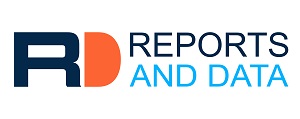Global Automated External Defibrillators Market Set to Reach USD 2.10 Billion by 2034

Reports And Data
Rising awareness of cardiac health and government initiatives drive market growth
VANCOUVER, BRITISH COLUMBIA, CANADA, September 10, 2025 /EINPresswire.com/ -- The global market for automated external defibrillators (AEDs) is projected to grow steadily over the next decade, rising from USD 1.33 billion in 2024 to USD 2.10 billion by 2034. This reflects a compound annual growth rate (CAGR) of 4.70%, according to the latest industry analysis.The market’s growth is strongly supported by increasing public awareness of cardiac health and the urgent need for timely intervention in sudden cardiac arrest cases. Cardiovascular diseases remain the world’s leading cause of death, accounting for around 17.9 million deaths annually, according to the World Health Organization. This alarming figure has encouraged governments and health organizations to expand public access defibrillation programs and strengthen emergency response systems.
You can Download Free Sample PDF Copy Of This Report At: https://www.reportsanddata.com/download-free-sample/11122
In the United States, the Public Access Defibrillation (PAD) program has contributed to a 12% year-over-year increase in AED installations in public spaces such as schools, airports, and sports facilities. Similarly, European countries including the UK and Germany have taken steps to expand AED access through large-scale initiatives. Public funding and regulatory reforms in both developed and emerging economies are further improving the availability of life-saving devices.
Technological advancements are also reshaping the AED market. The introduction of artificial intelligence (AI) and Internet of Things (IoT) features in AEDs has enhanced their efficiency and ease of use. AI-enabled AEDs now provide real-time feedback and voice guidance to users, while IoT connectivity allows for remote monitoring and timely maintenance to ensure devices are always ready. McKinsey & Company projects that IoT adoption in healthcare will grow by 20% annually, a trend that will further support AED adoption
Top 10 Companies
Philips Healthcare
Zoll Medical Corporation
Stryker Corporation
Nihon Kohden Corporation
Mindray Medical International Limited
Schiller AG
Cardiac Science Corporation
Physio-Control, Inc.
Defibtech, LLC
HeartSine Technologies
.Among product types, portable AEDs are expected to lead the market and register the fastest growth rate. Their ease of use and increasing adoption in non-hospital settings, including workplaces, homes, and public areas, make them the most preferred choice. The demand is also rising for wearable AEDs, which are designed to provide immediate intervention in high-risk patients.
North America currently dominates the market, supported by strong healthcare infrastructure, government funding, and established public access defibrillation programs. However, Asia Pacific is forecasted to experience the fastest growth over the coming decade. Expanding healthcare infrastructure, rising public health initiatives, and increasing investments from both governments and private organizations are driving demand across countries such as China, India, and Japan.
Despite the positive outlook, the market faces challenges. Regulatory approval processes for AEDs remain complex and costly. For example, in the United States, the Food and Drug Administration requires extensive clinical testing for AED approvals, which can delay new product launches. The average cost of bringing a medical device to market is around USD 31 million, with compliance costs accounting for a large portion.
Operational issues also limit wider AED deployment. Regular maintenance, including battery replacements, is critical for ensuring device readiness. Yet, surveys indicate that nearly 30% of public-access AEDs may not function due to poor maintenance. High costs further restrict adoption in low-income regions, where healthcare budgets remain limited.
Key players in the AED market include Philips Healthcare, Zoll Medical Corporation, and Stryker Corporation. These companies are focusing on product innovation, partnerships, and technological integration to strengthen their positions. Recent product launches, such as Philips’ portable AEDs with advanced connectivity features, highlight the industry’s direction toward user-friendly, reliable, and connected devices.
Sustainability is also becoming an important focus, with manufacturers increasingly turning to eco-friendly materials and energy-efficient designs to reduce environmental impact.
Automated External Defibrillators Market Segmentation
By Product Type
Portable AEDs
Semi-automatic AEDs
Fully automatic AEDs
By Application
Hospitals
Public Access
Home Care
Emergency Medical Services
By End User
Hospitals and Clinics
Public Access Settings
Home Care Settings
Pre-hospital Care
By Technology
Wearable AEDs
Conventional AEDs
By Distribution Channel
Direct Sales
Distributors
Online Retail
Get a Customized Report: https://www.reportsanddata.com/request-customization-form/11122
Overall, the AED market is set for steady growth over the next decade, driven by rising cardiovascular health concerns, public awareness campaigns, and rapid technological innovation. While regulatory and cost-related challenges remain, continued government support and private sector innovation are expected to accelerate the availability of these life-saving devices worldwide.
John W
Reports and Data
+1 2127101370
sales@reportsanddata.com
Legal Disclaimer:
EIN Presswire provides this news content "as is" without warranty of any kind. We do not accept any responsibility or liability for the accuracy, content, images, videos, licenses, completeness, legality, or reliability of the information contained in this article. If you have any complaints or copyright issues related to this article, kindly contact the author above.
